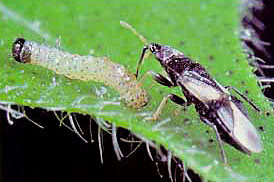Every winter - well every spring, summer and fall also, I walk through my garden and think, "What would be nice there?" or "How can I splash some color around there?".
These questions inevitably lead to trips to nurseries or green houses (which can get expensive). If I'm in a saving mood however, or if it's too cold to venture out with the girls; I get online. There is an incredibly vast supply of information and even some misinformation to sift through. (hint. Don't always trust the first post you find. It may be contradicted in the next.) Most information will be confirmed a few times, though so you should be able to sift the stack with ease.
Among my late sifting, I came across the Egret Flower. I can't find anyone who has them in stock, but I'm on a waiting list so they should be around this spring!
 |
| A nice addition. |
Egret FlowerHabenaria radiata, Egret Flower, is a hardy terrestrial orchid (meaning that it grows in the ground) that is native to Japan.
It is often grown by orchid enthusiasts in containers instead of the ground, but is well suited to being planted in the ground.
When the bulb arrives it will be packed in a bag or box filled with coco-fiber. Within the coco-fiber you will find small bundles of damp paper towels. Wrapped inside the paper towels are small bulbs about the size of a peanut. These are the Egret Flower Bulbs. It is important that these small bulbs not dry out before they are planted.
The bulbs should be planted in spring in a bright sunny location.
Amend the soil with plenty of well-rotted compost and improve drainage by adding small gravel, small sized pumice, or perlite.
Plant your bulbs no more than one inch deep.
The Egret Flower needs lots of moisture throughout the spring and summer. It even thrives in soils that are constantly saturated with water as long as the water is not stagnant (improving drainage with gravel will help water move through the soil and avoid stagnation). This moisture will simulate Asia's monsoon season, which stimulates the plant to produce leaves and flowers.
The plant requires a dormant period in winter and does not require water. If the plant is too moist during its dormancy it can easily rot.
The plant is hardy to Zone 5, but if you live in a place where you have difficulty controlling moisture levels in the soil in winter consider digging the plant and bringing it inside. Use the following technique:
- After the last flower has faded begin withholding water to slowly dry it out (never allow it to become "bone-dry").
- When the leaves begin to yellow and die (in fall) stop watering completely.
- Dig up the tiny peanut-sized bulbs and bring them inside.
- Place them in plastic zipper-type storage bags in barely moist vermiculite.
- Store these bags in the vegetable drawer of your refrigerator.
- Check the vermiculite once a month to be sure it isn't too wet or too dry.
- Replant the bulbs in the garden next spring.









